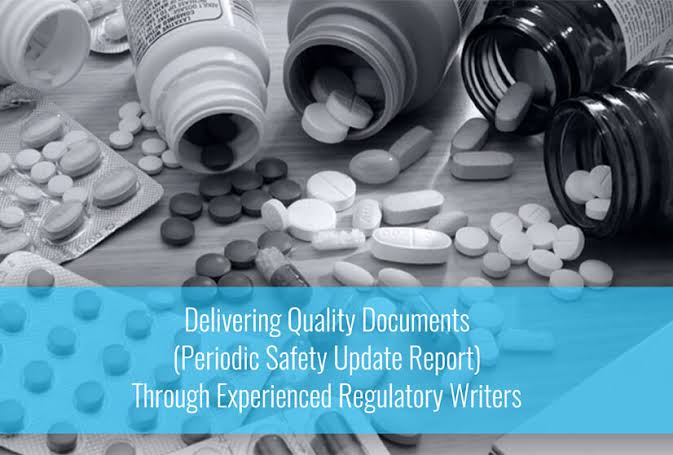Table of Contents
- Periodic Safety Update Reports (PSURs)
- Origin
- Purpose of Periodic Safety Update Reports (PSURs)
- General Principles
- Submission of PSURs
- Frequency of PSUR reporting
- Contents of PSUR
- You may be interested in…
- Diploma in Medical Writing
- Diploma in Medical Journalism
Periodic Safety Update Reports (PSURs)
In this post we shall discuss about Periodic Safety Update reports (PSURs). in this post we will cover the following topics:
Origin
The origin of PSUR stems from the following:
- 1992 – “International Reporting of Periodic Drug Safety update summaries” (Council for International organisations of medical sciences [CIOMS] II)
- 1996 – “Guidance for Industry E2C Clinical Safety Data Management: Periodic Safety Update reports for Marketed drugs”
- 2001 – “Current challenges in Pharmacovigilance: Pragmatic approaches” (CIOMS V)
- 2002 – “Draft Consensus Guideline – Addendum to ICH E2C Clinical Safety Data Management Periodic Safety Update Reports for marketed drugs.
Purpose of Periodic Safety Update Reports (PSURs)
Periodic Safety Update Report (PSUR) is a stand alone global-standardised document that can be used worldwide for:
- Identification of new safety signals and also
- Identification of changes to benefit-risk profile medical product
- Change in product label
- Change in product name/package/promotional material
- “Dear Doctor” letter
- Need for risk management activities
- Withdrawal from the market
- Monitoring effectiveness of risk management initiatives in relation to safety of the product
General Principles
A PSUR is intended to provide an update of the worldwide safety experience of a medicinal product to Competent Authorities at defined time points post-authorization. At these times, marketing authorization (MA) holders are expected to provide succinct summary information together with critical evaluation of the risk-benefit balance of the product in the light of new or changing information. This evaluation should ascertain whether further investigations need to be carried out and whether changes should be made to the marketing authorization and product information.
PSURs must be submitted for all registered products regardless of marketing status. A single report may cover all products containing the same active substance (s) licensed by one MA holder.
General Scope – Periodic Safety Update Reports (PSURs)
All relevant clinical and non-clinical safety data should cover only the period of the report (interval data) with the exception of authorization status information for initial and renewal applications, and data on serious, unlisted adverse reactions. This should be provided for both, the period in question and as cumulative summary tabulations starting from the International Birth Date (IBD).
The report will usually include all dosage forms and formulations, as well as indications associated with such an active. Within the PSUR, separate presentations of data for different dosage forms, indications or populations (for example children vs adults) may be appropriate, however an overview of the combined data should also be provided.
For combinations of substances which are also registered individually, safety information for the fixed combination may be reported in a separate PSUR, or be included as a separate presentation the report for one of the separate components, depending on the circumstances. Cross referencing all relevant PSURs is essential.
The main focus of the report should be adverse reactions. Unless indicated otherwise by the reporting healthcare professional, all adverse experiences reported spontaneously should be considered adverse reactions; for clinical study and literature cases, only those judged not related to the medicinal product by both the reporter and MA holder should be excluded.
PSURs should include a scientific evaluation of risk: benefit balance of the product (s)and should be generated according to the ICH E2C guidelines.
Submission of PSURs
PSURs should be submitted according to special MAIL.
Following submission of PSURs an acknowledgement letter is sent, if it is not received within 14 days then submitting authority should contact the Regulatory Information Service (RIS) to ensure the application.
Frequency of PSUR reporting
The following are the requirements of Frequency of PSUR reporting:
PSURs should be submitted at the following times from the time of authorization, for all medicinal products unless the marketing authorization makes different provisions:
- Immediately upon request
- At least 6 monthly after authorization and until the placing on the market.
- At least 6 monthly for the first two years after being placed on the market
- Annually for the subsequent two years
- Thereafter at three-yearly intervals.
Multiples of six-monthly PSURs are acceptable, provided that the MA holder submits a PSUR bridging summary report (BSR). Where multiple reports are being provided, the BSR should be comprehensive.
The data-lock point (DLP) is defined as the cut-off date for data to be included in the PSUR. It may be set according to the European Birth Date (EBD) or IBD of the medicinal product. The MAH should in any case submit the PSUR no later than 60 days after the DLP. For generic products the DLP may be set according to the Eu harmonised birth date (EU HBD) of a medicinal product as published on the Heads of Agencies (HMA) website.
Each PSUR should cover the period of time since the last update report. A PSUR, and BSR if appropriate, should also be submitted at renewal in line with renewal guidelines. Reports previously submitted for each marketing authorization do no need to be resubmitted and duplicate reports should not be submitted.
If the product is not marketed at approval, then there will be extra 6 monthly PSURs before marketing.
Indian Regulatory Aspect
Schedule Y also recommends that for all new products, PSURs should be submitted every 6 months for the initial 2 years, and thereafter annually for the next 2 years.
It is quire similar to the reporting cycle requirements of European Union (EU), where PSURs are required to be submitted every 6 months for the first 2 years, annually for the three following years and every 3 years, thereafter. In Eu, it is generally acceptable to the regulators that the generic companies skip the 6-monthly cycles of initial 2 years and submit the PSURs every 3 years from the date of marketing approval.
Reporting requirements of the USD FDA are, however, different. The US regulations require quarterly reports during the first 3 years and annual reports, thereafter.
Like other regulatory authorities, DCGI can also extend the total duration for the submission of PSURs if it is considered necessary in the interest of public health.
Contents of PSUR
The following are the Table of contents of a PSUR:
- Studies
- Other Information
- Overall safety evaluation
- Conclusion
- Appendix
- company core data sheet
- Consumer reports (US)
Introduction
The marketing authorization holder should briefly introduce the product so that the report “stands alone” but is also placed in perspective relative to previous reports and circumstances.
Reference should be made not only to the products covered but also reports and circumstances.
Exclusion should be explained, for example, they may be covered in a separate report (e.g. for a combination product)
If it is know that the PSUR on the same product will be submitted by another marketing authorization holder, some of whose data are included in the report, the possibility of data duplication should be noted.
Worldwide marketing Authorization
This section of the report provides cumulative information.
The following information should be provided, usually as a table, for all countries where a regulatory decision about marketing has been made related to the following:
- Dates of marketing authorization, and subsequent renewal;
- Any qualifications surrounding the authorization, such as limits on indications if relevant to safety;
- Treatment indications and special populations, covered by the marketing authorization, when relevant;
- Lack of approval, including explanations by regulatory authorities;
- Withdrawal by the company of an authorization application submission if related to safety or efficacy;
- Dates of launch;
- Trade name.
Typically, indications for use, populations treated (e.g. children vs adults) and dosage forms will be the same in many or even most countries, where the product is authorised. However when there are important differences, which would reflect different types of patient exposures, such information should be noted. This is especially true if there are meaningful differences in the newly reported safety information that are related to such different exposures.
If more convenient and useful, separate regulatory status tables for different product uses or forms would be considered appropriate.
Country entries should be listed in chronological order of regulatory authorizations.
Update of Regulatory authorities or MAH actions taken for safety reasons
This section should include details of the following types of actions relating to the safety that were taken during the period covered by the report and between data lock-point and submission.
- Marketing authorization withdrawal or suspension;
- Failure to obtain marketing authorization renewal;
- Restrictions on distribution;
- Clinical trial suspension;
- Dosage modification;
- Changes in target populations or indications;
- Formulation changes
- Urgent safety restrictions
The safety related reasons that led to these actions should be described and documentation appended when appropriate; any communication with the healthcare professionals (e.g Dear Doctor letters) as a result of such action should also be described with copies appended.
Changes in reference safety information
The version of the “Company Core Data Sheet (CCDS) with its “Company Core Safety Information” (CCSI) in effect at the beginning of the period covered by the report should be used as a reference. It should be numbered, dated and appended to the PSUR and include the date of the last revision.
Changes to the CCSI, such as new contraindications, precautions, warnings, ADRs, or interactions, already made during the period covered by the report, should be clearly described, with presentation of the modified sections. The revised CCSI should be used as a reference for the next report and the next period.
With the exception of emergency situations, it may be sometime before the intended modifications are introduced in the product-information materials [provided to the prescribers, pharmacists and consumers. Therefore during that period the amended reference document (CCDS) may contain more “listed” information than the existing product information in many countries.
When meaningful differences exists between the CCSI and the safety information in the EU SPC (or the official data sheets/product information documents approved in a country), a brief comment should be prepared by the marketing authorization holder, describing the local differences and their consequences on the overall safety evaluation and on the actions proposed or initiated. The commentary may be provided in the cover letter or other addendum accompanying the local submission of the PSUR.
Patient Exposure
Where possible, an estimate of patient exposure should cover the same period as the interim safety data. While it is recognised that it is usually difficult to obtain and validate accurate exposure data, and estimate of the number of patients exposed should be provided along with the method used to derive the estimate.
An explanation and justification should be presented, if the number of patients is impossible to estimate. In its place, other measures of exposure, such as patient-days, number of prescriptions or number of dosage units are considered appropriate; the method used should be explained. If these or other more precise measures are not available, bulk sales (tonnage) may be used.
The concept of defined daily dose may be used in arriving at patient exposure estimates. When possible and relevant, data broken down by sex and age (especially paediatric vs adult) should be provided.
When pattern of reports indicates a potential problem, details by country (with locally recommended daily dose) or other breakdown (e.g. indication, dosage form) should be presented if available.
When ADR data from clinical studies are included in the PSUR, the relevant denominator(s) should be provided for ongoing and/or blinded studies, an estimation of patient exposure may be made.
Presentation of Individual case Histories
- General considerations
- Cases presented as Line listings
- Presentation of the line listing
- Summary tabulations
- Marketing authorisation holders analysis of individual case histories
Table of Contents of the PSUR
Coming back to the contents of the PSUR, the following are the Table of contents of a PSUR:
- Studies
- Other Information
- Overall safety evaluation
- Conclusion
- Appendix
- company core data sheet
- Consumer reports (US)
Let us have a look at these one by one.
Studies
All completed studies (non-clinical, clinical and epidemiological) yielding safety information with potential impact on product information, studies specifically planned or in progress, and published studies that address safety issues, should be discussed. This includes:
- Newly analysed studies
- Targeted new safety studies
- Published studies
Other Information
Efficacy Related Information
For a product used in prevention or to treat serious or life threatening diseases, medically relevant lack of efficacy reporting, which might represent a significant hazard to the treated population, should be described and explained.
Late Breaking Information
Any important, new information received after the database was frozen for review and report preparation may be presented in this section. Examples include significant new cases or important follow-up data. These new data should be taken into account in the overall safety evaluation.
Overall Safety Evaluation
The marketing authorization holder should provide a concise analysis of the data presented, taking into account any late-breaking information, and followed by the marketing authorization holder’s assessment of the significance of the data collected during the period. The marketing authorization holder should also review the cumulative experience and highlight any new information on:
- A change in characteristics of listed reactions, e.g. severity, outcome, target population
- Serious unlisted reactions, placing into perspective the cumulative reports
- Non-serious unlisted reactions
- An increased reporting frequency of listed reactions, including comments on whether it is believed the data reflect a meaningful change in ADR occurrence
Conclusion
PSURs should indicate the safety findings that are different than that found in the current reference safety information. It should indicate what actions were or will be taken such as Change in CSI, Risk management initiatives etc.
Appendix
This should include:
- Company Core Data Sheet
- Consumer Report (US)
- Aggregate data – to better identify new safety signals especially rare adverse events
- Worldwide data – safety signal strengthened is seen in more than one country
- Multiple sources of information – also strengthens the safety signal
- Spontaneous reports
- Healthcare professionals, Consumers (US)
- Literature
- Studies
- Animal findings
This completes our discussion on Periodic Safety Update Reports (PSURs). We hope this helps you get some insight into what are Periodic Safety Update Reports (PSURs).
Want to explore a career in Medical writing? Join our Diploma in Medical Writing program and kick-start a career in Medical and Scientific writing.
Already completed a program in Medical writing. Enhance your expertise on the subject by subscribing to our Diploma in Medical Writing course to get access to a wealth of knowledge on the subject on our learning portal.



